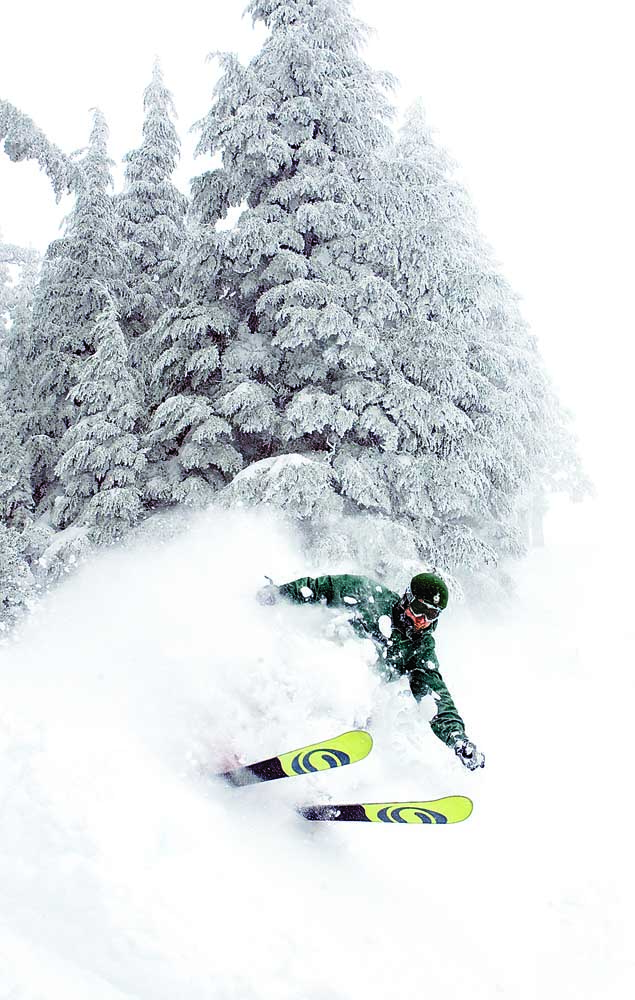La Niña could bring cold, wet weather through December, models predict
Published 5:00 am Saturday, September 18, 2021

- ORIG/ Downhill skier Brent Rankin, 35, of Bend lays into a powder carve while riding with his friends at Mount Bachelor in 2008.
A stretch of cold weather and lots of precipitation is just what is needed in drought-stricken Oregon. Climate models are predicting that sort of weather is on its way over the next three months.
Colder and wetter weather than normal is expected after a hot and dry summer, according to Pete Parsons, lead meteorologist for the Oregon Department of Forestry. That is typical of La Niña-influenced weather patterns.
Trending
“La Niñas give you the extremes in both directions. I would hedge my bets toward a cold, wet and snowy winter, late fall and into winter,” said Parsons in a video presentation.
Central Oregon could use the wet weather. According to the U.S. Drought Monitor, the eastern half of Deschutes County falls in the category of exceptional drought, the highest level. The western half of the country is in extreme or severe drought, categories just below exceptional drought.
All of Crook County is in exceptional drought and most of Jefferson County is in exceptional drought.
Reservoirs in Central Oregon, built mainly to hold back water for farmers to use in summer, lie mostly empty. Wickiup Reservoir ran out of water in mid-August and Crescent Lake is just 7% full. Prineville Reservoir is just 23% of its capacity.
The climate models used by Parsons and other meteorologists are mainly based on temperatures in the Pacific Ocean, which affect the jet stream and weather patterns. Years with similar patterns to this year, in 1971 and 2008, had cold outbreaks and low elevation snow, said Parsons.
“The odds are looking better by the end of December for us to get into the wet weather, if not sooner, and build some mountain snow,” said Parsons.
Trending
The science is not exact, said Parsons, and there is no guarantee of wet weather, but he said the models produce a familiar pattern.
“So big snows are possible this winter,” said Parsons. “It’s impossible to say for sure, but the door is open. This is the type of setup that gives us our significant snowstorms in the western valleys in the wintertime.”
Larry O’Neill, an associate professor with Oregon State University’s College of Earth, Ocean, and Atmospheric Sciences, has a more conservative outlook and is expecting a weak La Niña this fall and winter. Weak La Niñas have historically been a “mixed bag” in terms of precipitation and snowpack, he said.
Some recent years with weak La Niñas have had a wetter than normal winter, said O’Neill, who also serves as Oregon’s state climatologist. Those years include 2005-06, 2008-09, and 2017-18, when Northwest Oregon had above-normal precipitation and Southern and Eastern Oregon had near to above-normal precipitation.
“As we saw last year, being in La Niña does not necessarily lock us into a wetter than normal winter,” he said.
O’Neill points out that while a wet winter will certainly help with the drought, it will likely not fully recover the water deficits Central Oregon has accrued. That was the case in 2015, another severe drought year that led to several years of successive water shortages. The 2021 drought has just plunged Central Oregon further into a water deficit.
Still, any amount of wet weather would be welcome news for the eight irrigation districts that provide water to this area’s farming community.
Drought conditions this year forced Central Oregon Irrigation District, a senior water rights holder, to cut its deliveries to 65% of normal. Other districts received even less. North Unit Irrigation District patrons received roughly half of their allotment.
Kyle Gorman, region manager for the Oregon Water Resources Department, said a significant amount of rain in the autumn months will help to saturate the soil, or “prime the pump” that will allow for healthy water runoff in the spring.
Even with a good amount of rain, Wickiup Reservoir won’t fill next year, he said, but a strong winter will allow reservoirs to start to recover.
“We need some wet, heavy winter snowpack,” said Gorman. “That’s what we need.”








